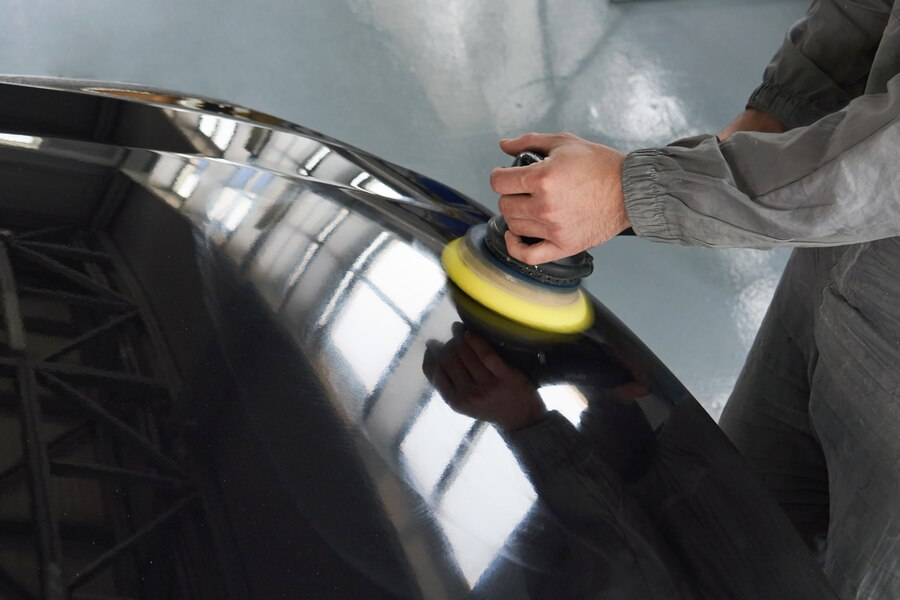Learn How To Tint Windows

Understanding the Basics:
- Before you grab your tools, it’s crucial to understand what window tinting involves. Window tint is a thin laminate film that can be installed on the interior or exterior of glass surfaces in automobiles and buildings. It’s made from various materials, including polyethene terephthalate (PET), for its clarity, tensile strength, and dimensional stability.
Read More: Learn How To Wax
Benefits of Window Tinting:
Privacy: Window tints can obscure the interior view, providing privacy for vehicle passengers or building occupants.
UV Protection: High-quality tints can block up to 99% of harmful UV rays, protecting occupants and preventing the interior furnishings from fading.
Heat Reduction: Window tints can reduce the amount of solar heat entering a space, helping to lower cooling costs and create a more comfortable environment.
Safety and Security: Tints can help hold shattered glass together in the event of an accident, reducing the risk of injury.
Glare Reduction: Tinting can significantly minimize glare from the sun and headlights for safer driving and indoor lighting control.
Tools You’ll Need:
To get started, it’s essential to have the right tools:
Window tint film
Application solution (soapy water works well)
Squeegee
Razor knife or precision cutting tool
Lint-free cleaning cloth
Heat gun
Step-by-Step Window Tinting Process:
Prep the Windows:
- First and foremost, ensure that the windows are impeccably clean. Dust, dirt, or oils can hinder the film’s ability to adhere properly. Use a lint-free cloth and a mild cleaning solution to cleanse the window surface thoroughly. Pay extra attention to corners and edges, where debris tends to accumulate.
Measure and Cut the Tint Film:
- Measure the window you’re tinting and then cut your film to size, leaving a small margin (about one inch) around all sides for final adjustments. When cutting the film, use a flat surface and ensure your cutting tool is sharp to avoid jagged edges or tears.
Apply the Application Solution:
- Spray the application solution generously on the window’s surface. This solution helps position the tint film and activates the adhesive.
Place the Tint Film:
- Carefully remove the film’s backing to expose the adhesive. Then, starting from the bottom, apply the film to the window. The soapy water will allow you to slide and manipulate the film into the correct position.
Squeegee Out Bubbles:
- Once the film is positioned correctly, use your squeegee to press out any air bubbles and excess water between the film and the glass, working from the centre outward. Take your time with this process to ensure a smooth, bubble-free finish.
Trim the Edges:
- With the film now in place, carefully trim any excess material with your razor knife. To avoid peeling, aim to leave a slight gap (about 1/16 inch) between the film and the window frame.
Read More: Yauvari Amplified Youth Spring How To Use
Dry and Cure:
- After installation, the window will need time to dry out completely. Avoid rolling down car windows or pressing on the film during this period. Depending on the climate and the type of adhesive used, curing can take anywhere from a few days to a month.

Tips for Success:
· Practice makes perfect. Start with smaller, less critical windows to refine your technique.
· Take your time. Rushing the process increases the likelihood of mistakes.
· Pay attention to local regulations regarding window tinting, as laws vary by state and country.
· Offer your clients quality film options. The longevity and effectiveness of the tint job depend significantly on the film’s quality.
Conclusion Learn How To Tint Windows
Mastering the art of window tinting requires patience, precision, and the proper knowledge. By following this guide, professionals can enhance their skill set and provide exceptional quality services that stand out in the competitive window tinting market. A well-executed window tint can make all the difference in aesthetic appeal, privacy, or protection.

